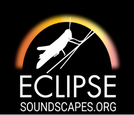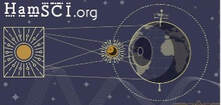The Oil Region Astronomical Society is hosting the Eclipse 2024 Event April 7-8. The event is open and FREE to the public. If you miss this one, you will have to wait another 75 years to see a total solar eclipse from this part of the country. Don’t miss out! ORAS requests those planning to attend pre-register as soon as possible so we can better prepare for the event. There is limited capacity at the Observatory site and a limited number of eclipse glasses available for the public.
From the Observatory site, 99.6% of the sun will be covered. If you want to get into the path of totality, you will need to drive about 45 minutes northwest of the Observatory. However, the Observatory makes a great home-base. Come, relax, stay overnight, and if it looks like clear sky is possible, head to the path of totality and then return to the Observatory site, let the traffic clear and enjoy the evening with others.
WHEN: Sunday, April 7 and Monday, April 8, 2024
WHERE: Oil Region Astronomy Learning Center - CLICK HERE for directions
REGISTRATION: CLICK HERE to Register
PLANNED ACTIVITIES
Sunday, April 7
3:00 PM – the Observatory Site Opens
5:00 PM – 6:00 PM – Telescopes set up to safely observe the Sun (weather permitting)
6:00 PM – 7:30 PM – Education Program: The presentation will focus on answering the following questions:
8:00 PM – Night Sky Observing with Telescopes Begins (weather permitting).
NOTE: Those who want to stay on site overnight, may do so. Overnight fee applies. CLICK HERE for Field Usage Rules and Overnight Fee
Monday, April 8
11:00 AM – ORAS Facilities Open
IMPORTANT: For those wanting to get into the path of totality (100% of the Sun is covered), we recommend driving ~50 min northwest of the Learning Center to Hasbrouck Park, just north of Titusville, PA off Route 8. From that location, TOTALITY will begin at exactly 3:17:30 PM, and will end at 3:19:14 PM. You will be in TOTALITY for a total of 1 min 43 sec. If you are asking yourself, "Is it worth the drive to experience totality?" The answer is a BIG YES!
12:00 PM – 5:00 PM – Live streaming of the Eclipse events being held in other locations and telescopes will be set up to safely observe the Sun (weather permitting)
2:02 PM – Eclipse Begins
3:18:27 PM – 99.6% of Sun is covered by the Moon (Eclipse Maximum from Observatory)
4:31 PM – Eclipse Ends
6:00 PM – Event Ends
NOTE: Those who want to stay on site overnight, may do so. Overnight fee applies. CLICK HERE for Field Usage and Overnight Fee
Are you looking for lodging accommodations? The Observatory is located near the towns of Clarion, Franklin, and Oil City, PA. The are many Air BnBs and Bed & Breakfasts in the area, as well as hotel options. Please let us know via email if you have difficulty finding lodging accommodations.
From the Observatory site, 99.6% of the sun will be covered. If you want to get into the path of totality, you will need to drive about 45 minutes northwest of the Observatory. However, the Observatory makes a great home-base. Come, relax, stay overnight, and if it looks like clear sky is possible, head to the path of totality and then return to the Observatory site, let the traffic clear and enjoy the evening with others.
WHEN: Sunday, April 7 and Monday, April 8, 2024
WHERE: Oil Region Astronomy Learning Center - CLICK HERE for directions
REGISTRATION: CLICK HERE to Register
PLANNED ACTIVITIES
Sunday, April 7
3:00 PM – the Observatory Site Opens
5:00 PM – 6:00 PM – Telescopes set up to safely observe the Sun (weather permitting)
6:00 PM – 7:30 PM – Education Program: The presentation will focus on answering the following questions:
- What can you expect to see?
- How can you safely observe the eclipse? (ORAS has secured solar eclipse glasses which will be handed out at the event. Again, there is no charge for the glasses, but donations are appreciated.)
- How can you safely photograph the Eclipse?
- Where can you go to be in the path of totality? Traveling about 45 minutes northwest of the Observatory will place you in the path of totality. Various locations will be provided.
- Recent News Article - Check out the recent news article Eclipse puts Erie in the shadow of the moon, fingers crossed for a moving celestial show authored by ORAS President, Dean Miskovich. It's an excellent read!
8:00 PM – Night Sky Observing with Telescopes Begins (weather permitting).
NOTE: Those who want to stay on site overnight, may do so. Overnight fee applies. CLICK HERE for Field Usage Rules and Overnight Fee
Monday, April 8
11:00 AM – ORAS Facilities Open
IMPORTANT: For those wanting to get into the path of totality (100% of the Sun is covered), we recommend driving ~50 min northwest of the Learning Center to Hasbrouck Park, just north of Titusville, PA off Route 8. From that location, TOTALITY will begin at exactly 3:17:30 PM, and will end at 3:19:14 PM. You will be in TOTALITY for a total of 1 min 43 sec. If you are asking yourself, "Is it worth the drive to experience totality?" The answer is a BIG YES!
12:00 PM – 5:00 PM – Live streaming of the Eclipse events being held in other locations and telescopes will be set up to safely observe the Sun (weather permitting)
2:02 PM – Eclipse Begins
3:18:27 PM – 99.6% of Sun is covered by the Moon (Eclipse Maximum from Observatory)
4:31 PM – Eclipse Ends
6:00 PM – Event Ends
NOTE: Those who want to stay on site overnight, may do so. Overnight fee applies. CLICK HERE for Field Usage and Overnight Fee
Are you looking for lodging accommodations? The Observatory is located near the towns of Clarion, Franklin, and Oil City, PA. The are many Air BnBs and Bed & Breakfasts in the area, as well as hotel options. Please let us know via email if you have difficulty finding lodging accommodations.

CLICK HERE TO DOWNLOAD The OneEclipse App co-developed with Astronomers Without Borders! This is a great resource to use to locate the path of totality and get eclipse details for any location. The App also allows you to share your experience and images with others in real time.

CLICK HERE to visit the NSF National Solar Observatory (NSO) Eclipse Website. The website provides details about the eclipse and a wide variety of resources. The mission of NSO is to advance our understanding of the Sun, both as a star and as a major influence for life on Earth, and is funded by the National Science Foundation (NSF). Join NSF and NSO to watch the 2024 total solar eclipse live on April 8 - CLICK HERE for live broadcast!

CLICK HERE for the NASA Eclipse Website. The website provides details about the eclipse, various learning resources, and live streaming of the eclipse event on April 8.
Interested in collaborating with scientists on eclipse-related research?
Check out the opportunities below!
Check out the opportunities below!

Eclipse Soundscapes Project (ES) - How does wildlife respond to a solar eclipse? Use your cell phone to record sounds before, during, and after an eclipse. ES is studying how eclipses affect life on Earth during the April 8, 2024 total solar eclipse. Eclipse Soundscapes will revisit an eclipse study from almost 100 years ago that showed that animals and insects are affected by solar eclipses! Like this study from 100 years ago, ES will ask for the public’s help. ES will also use modern technology to continue to study how solar eclipses affect life on Earth!

Eclipse MegaMovie - If you have a DSLR camera and a tripod, you can participate! Many jets and plumes seem to disappear or change from the time they are formed on the Sun and when they move out into the solar wind. To learn more about these solar phenomena, we will use photographs taken by volunteers to identify solar jets as they leave the Sun's surface and solar plumes as they grow and develop.

SunSketcher - Use your phone to help measure the exact shape and size of the Sun by photographing an eclipse phenomenon called Baily’s Beads. The 2024 Eclipse offers an unprecedented opportunity to measure the shape of the Sun and so to infer its inner structure. The SunSketcher project will use smartphone observations by Citizen Scientists situated along the two-thousand-mile-long eclipse path from Texas to Maine to reveal the precise shape of the solar disk.

GLOBE Observer - Use GLOBE Observer, the app of The GLOBE Program, and a thermometer to measure air temperature changes and monitor the clouds during the eclipse.

HamSCI Festivals of Eclipse Ionospheric Science (FoEIS) – Concurrent with the April 8, 2024 total solar eclipse, the worldwide amateur (ham) radio community will be creating data for space physics research. They will do so by transmitting, receiving and recording signals across the HF radio spectrum. The operating format will be a series of friendly ham radio competitions and researcher-led experiments.
ORAS thanks the U.S. National Science Foundation and NASA for providing eclipse glasses for this event.

